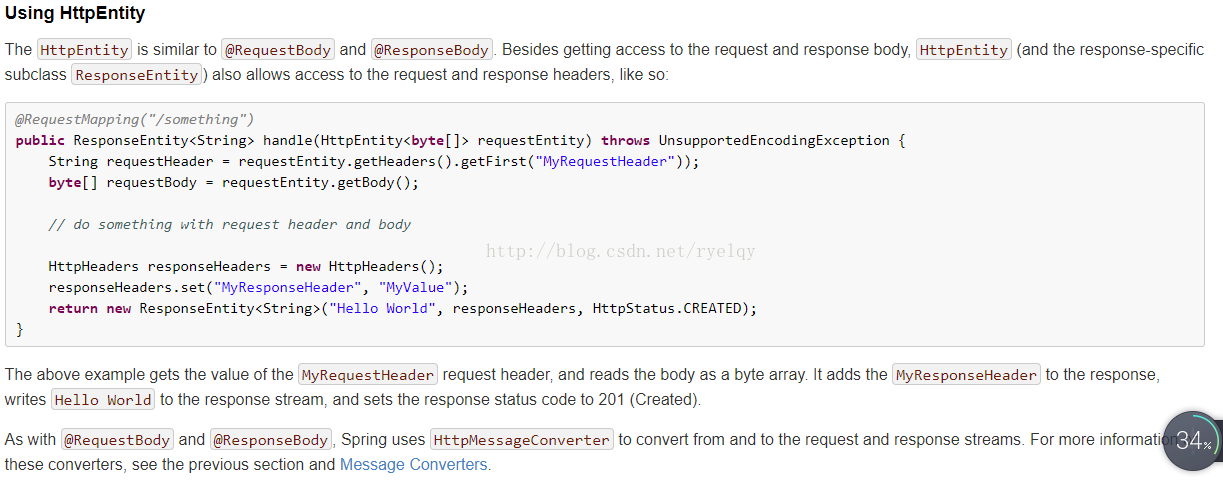SpringMVC之使用ResponseEntity
1、Post请求
一般情况下,在非必须的情况下,使用Jquery实现post请求,而后台返回一般都需要手动封装ResponseUtil,和使用@ResponseBody注解来实现返回。然而我们书上学到的关于Spring的知识只是我们日常使用频率较高的,Spring还提供了很多工具与方法,可以方便与快捷实现原有的功能。一般情况下,我们所学的使用频率80%的知识,只占知识总量的20%甚至更低,剩下使用20%频率的知识,占知识总量的80%。
2、实例
1)前台代码:
<script type="text/javascript" src="JQuery/jquery-3.2.1.js"></script>function responseEntity(){
$.post("${pageContext.request.contextPath}/Test/responseEntity.do",{},function(data){
alert(data.message);
});
}<input id="responseEntityTest" type="button" value="request" onclick="responseEntity()"> @RequestMapping("/responseEntity.do")
public ResponseEntity<Map<String,Object>> responseEntity(){
Map<String,Object> map = new HashMap<String,Object>();
map.put("message", "Hello Wrold");
return new ResponseEntity<Map<String,Object>>(map, HttpStatus.OK);
}3、结果
Reference:
[1] Rod Johnson, Juergen Hoeller, Spring Framework Reference Documentation 4.3.10.RELEASE, http://docs.spring.io/spring/docs/current/spring-framework-reference/htmlsingle/#mvc-introduction, 22.3.3,Using HttpEntity






